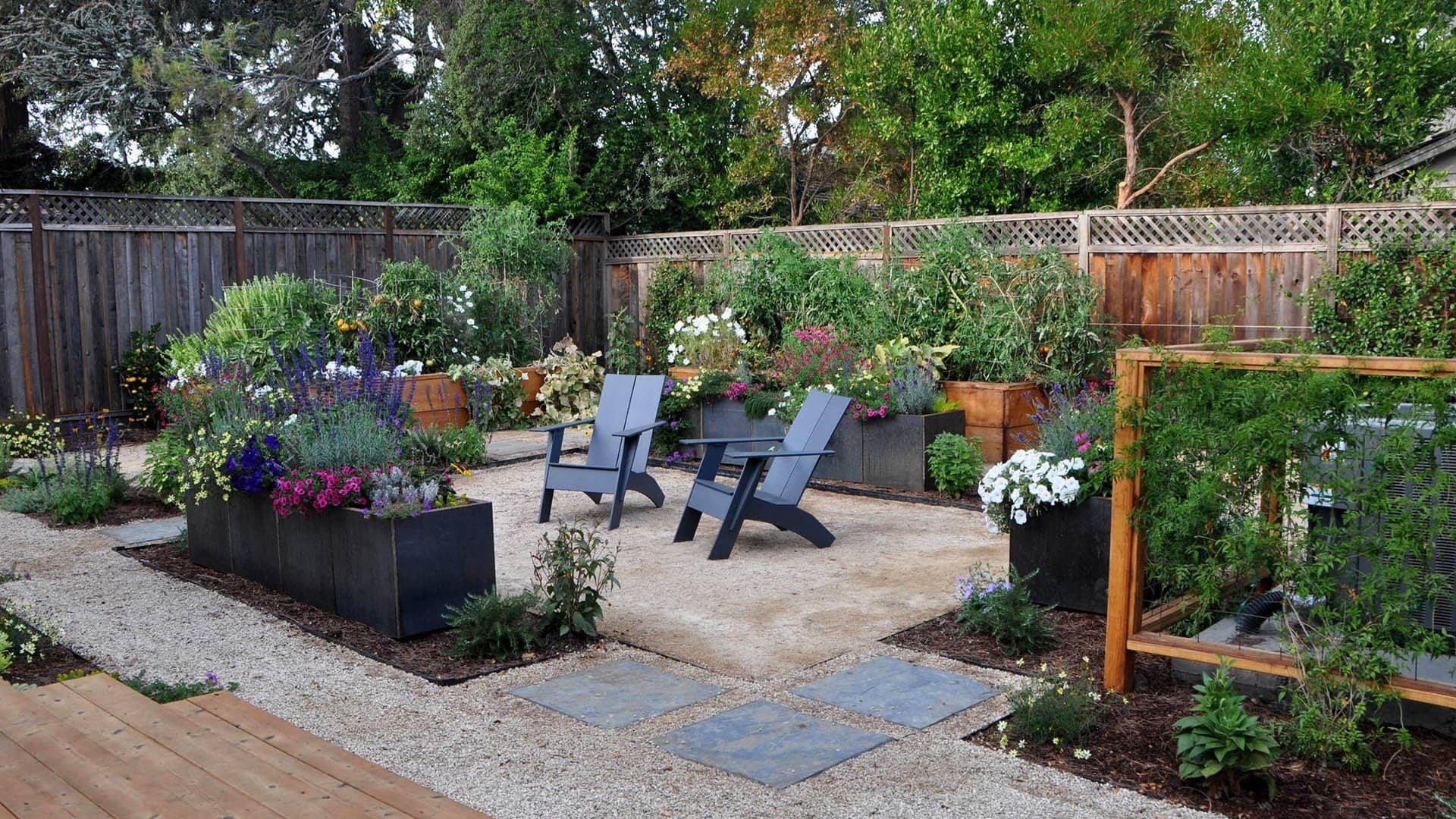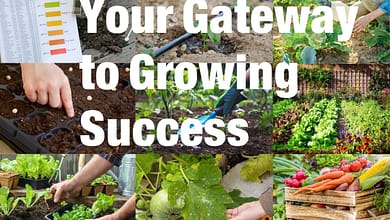Landscape Gardening on a Budget: Affordable Design Ideas

Landscape gardening is an art that beautifully blends creativity with nature, transforming outdoor spaces into stunning retreats that invite relaxation and enjoyment.
This practice not only enhances the aesthetic appeal of a property but also fosters a calming environment where individuals can unwind and connect with the natural world.
An inviting garden can significantly contribute to a homeowner’s sense of well-being and satisfaction, providing a personal oasis to escape the hustle and bustle of daily life.
Beyond visual enhancement, gardens can also support local wildlife, contribute to biodiversity, and improve air quality, making them invaluable assets to any home. Achieving these wonderful results, however, doesn’t have to come with a hefty price tag.
There are countless budget-friendly approaches that anyone can adopt, from selecting affordable, hardy plants that thrive in various climates to using repurposed materials creatively in design.
This blog post will delve deeper into various strategies, including tips on DIY landscape gardening projects, maximizing small spaces, and utilizing native plants that require less maintenance, all aimed at creating a stunning garden without overspending.
By encouraging everyone to embrace their green thumb, we can foster a greater appreciation for the beauty and benefits of thoughtfully designed outdoor spaces in landscape gardening.
Table of Contents
1. Planning Your Garden

Assessing Your Space and Needs
Before starting your landscape gardening project, it’s essential to evaluate your available space.
Take note of the sunlight patterns, soil conditions, and drainage in your yard.
Determine how much time you can realistically dedicate to maintenance and gardening tasks.
Understanding your personal preferences and lifestyle will help inform the type of plants and design features that will best suit your garden.
Setting a Realistic Budget
Establishing a budget is a critical step in the landscape gardening planning process. Begin by listing all potential expenses, including plants, soil, tools, and decor.
Research average costs to have a clearer idea of what you can afford.
Factor in a little extra for unexpected expenses, as landscape gardening often comes with surprises.
A well-defined budget will guide your decisions and prevent overspending.
Tips for Prioritizing Design Features
Identifying your top priorities will help streamline the design process.
Consider which features are most important to you—whether it’s a vegetable patch, a flower garden, or a space for entertaining guests. Focus on essential elements first, like planting trees or creating pathways.
You can always build on your landscape gardening design over time, adding decorative finishes and features as your budget allows.
By prioritizing, you’ll create a garden that meets your needs while keeping costs under control.
2. Choosing Affordable Plants



Types of Low-Cost Plants and Where to Find Them
When selecting plants for your budget landscape gardening project, look for varieties that are known for being affordable and easy to grow.
Consider annuals like petunias, marigolds, and zinnias, which often come at a low price in bulk, especially during gardening sales. Perennials such as daylilies, hostas, and coneflowers can also be economical in the long run, as they return year after year.
Local nurseries, community plant swaps, or online marketplaces are excellent sources to find these plants at lower prices, and purchasing in bulk can often lead to significant savings.
Benefits of Native Plants for Budget Gardens
Incorporating native plants into your landscape gardening design is a smart choice for both your budget and the environment.
Native plants are well-adapted to local climates and soil conditions, meaning they require less water, fewer fertilizers, and less maintenance overall. This resilience translates into cost savings, as you can reduce spending on resources and replacement plants.
Additionally, they provide essential habitats for local wildlife, supporting the ecosystem while enhancing the beauty of your garden.
Seasonal Plants for Cost-Effective Choices
Seasonal plants can be a wonderful way to keep your landscape gardening vibrant without breaking the bank. Selecting plants that are in season can significantly lower costs since they are more readily available and typically less expensive.
For example, consider planting spring bulbs like tulips and daffodils for a burst of early color, followed by summer blooms such as sunflowers and cosmos.
Planning your landscape gardening around seasonal changes allows for a dynamic and colorful display while spreading out your expenses throughout the year, making it easier to manage your gardening budget.
3. Creative Garden Design Ideas

Using Repurposed Materials for Garden Paths and Borders
Repurposing materials is a fantastic way to create unique and cost-effective garden paths and borders in landscape gardening.
Items like old bricks, stones, and even wooden pallets can be transformed into charming pathways that guide visitors through your garden.
Consider using reclaimed wood for edges or borders to define specific areas, such as flower beds or vegetable patches.
Not only do these materials reduce waste, but they also add character and a rustic charm to your outdoor space.
DIY Garden Decor and Features
Creating your garden decor can be both fun and economical. Simple projects like painted rocks, homemade plant markers, or decorative bird feeders can personalize your garden while staying on budget.
You might also consider upcycling items like old tires or containers to make vibrant planters that add depth and color. For a splash of creativity, consider crafting outdoor art or adding a water feature using a repurposed barrel or bowl.
These DIY projects not only enhance visual appeal but also allow for personal expression in your landscape gardening design.
Simple Layouts That Maximize Space
When working with limited space, opting for a simple layout can be highly effective in landscape gardening.
Start by designing areas that serve multiple functions, like a seating area surrounded by plants for relaxation and enjoyment. Raised beds can also maximize space by allowing you to grow more in a smaller footprint.
Vertical gardening, using trellises or hanging pots, makes excellent use of vertical space, providing additional growing areas without taking up more ground.
By keeping your landscape gardening design straightforward and purposeful, you can create a cohesive garden that feels expansive and inviting.
4. Maintaining Your Budget Garden

Cost-Saving Maintenance Tips
Keeping your budget landscape gardening thriving doesn’t have to be costly. Regular maintenance tasks, such as weeding and mulching, can prevent bigger problems down the line, saving you money on more extensive interventions.
Use homemade compost and organic fertilizers to nourish your plants effectively and economically. Additionally, setting up a rainwater collection system can provide natural irrigation and reduce water bills.
Regularly checking for pests and diseases allows for early intervention, which can minimize the need for expensive treatments.
Importance of Seasonal Planning
Planning your landscape gardening according to the seasons is crucial for both budgeting and plant health. By understanding which plants thrive in each season, you can allocate resources wisely and avoid overspending.
For example, planting fall crops in late summer or fall can ensure continuity in your garden without unnecessary purchases.
Seasonal planning also allows for crop rotation, which can enhance soil health and yield while reducing the risk of pests and diseases.
Keeping a planting calendar can help you track seasonal tasks, ensuring that you’re prepared for each phase of your garden’s lifecycle.
DIY Solutions for Common Gardening Issues
Many common landscape gardening problems can be tackled through DIY solutions, making maintenance simpler and more cost-effective.
For example, you can create your natural pest repellents using ingredients like garlic, neem oil, or dish soap, which are often cheaper than commercial options. Building your trellises or stakes for plants can save money and add a personal touch to your garden.
If you face soil issues, consider testing it at home and making amendments using materials you might have on hand, such as coffee grounds or kitchen scraps.
You can address challenges without straining your landscape gardening budget by staying resourceful and creative.
5. Incorporating Hardscaping

Affordable Options for Patios and Walkways
Adding hardscaping elements like patios and walkways can transform your garden while being budget-friendly.
Consider using materials such as gravel, pavers, or reclaimed bricks to create attractive, easy-to-install, and maintain pathways.
Gravel is an especially cost-effective option, providing a natural look that allows rainwater to seep through and reduce runoff.
Paver stones can also be laid out in creative patterns to enhance visual appeal without the high cost of traditional concrete slabs.
Using Gravel and Stones to Enhance Your Garden
Gravel and stones are versatile materials that can transform your garden’s overall design. They work well as ground cover, helping to reduce weeds while maintaining a neat appearance.
Additionally, they are perfect for creating decorative borders around flower beds or vegetable patches. Larger stones can serve as focal points or even be repurposed as seating, adding both functionality and aesthetic appeal.
By incorporating these natural materials, you achieve a seamless blend with plants while also improving drainage. This not only enhances the garden’s beauty but also promotes a healthier and more sustainable environment.
DIY Projects for Building Garden Structures Like Trellises
Constructing your garden structures, such as trellises, can be both fun and economical. Simple designs using materials like wooden lattice, bamboo poles, or even repurposed furniture can create supportive frameworks for climbing plants.
A DIY trellis can be customized to fit any space and can be painted or stained to complement your garden’s color scheme. This personal touch not only saves money but also offers the satisfaction of creating something unique that enhances the growth of your landscape gardening plants.
6. Water Features on a Budget

Ideas for Low-Cost Water Elements
Adding water features to your garden doesn’t have to be expensive. Start small with a simple birdbath made from an old pot or basin. This not only adds charm but also attracts wildlife, creating a lively focal point.
Another budget-friendly idea is a container water garden. Use a large tub or barrel, fill it with water, and add plants like lilies or lotus for a stunning effect. For larger spaces, consider a small pond using a pre-formed liner. Surround it with rocks and plants for a natural, cohesive look.
Benefits of Adding Water Features to Your Landscape
Water features bring more than just beauty to your garden. They create a tranquil atmosphere, with soothing sounds that can mask unwanted noise. These features also attract birds and other wildlife, enriching your garden’s biodiversity.
Additionally, water features can regulate the local microclimate by adding humidity and providing cooling effects during hot weather. This makes your outdoor space more comfortable for both you and your guests.
Maintenance Tips for DIY Water Features
Caring for your DIY water features is simple with regular attention. Keep water levels consistent to support plants and wildlife. Cleanliness is key—remove debris and algae frequently to maintain clear water.
If your feature includes fish or aquatic plants, invest in a basic filtration system or an aerator to maintain water quality. Plan for seasonal upkeep by clearing debris and preparing for winter, ensuring your water feature stays functional all year.
7. Lighting Your Garden

Budget-Friendly Outdoor Lighting Options
Enhancing your garden with outdoor lighting doesn’t have to break the bank. String lights are an affordable way to create a warm and inviting atmosphere. They can be effortlessly draped between trees, along fences, or around seating areas for a cozy glow.
Another cost-effective choice is solar-powered garden lights. These lights are easy to install, require no wiring, and are energy-efficient. Available in a variety of styles, they can complement your garden’s aesthetic while improving safety and visibility during the evening hours.
How to Highlight Focal Points with Lighting
To make your garden truly shine, strategically placing lighting around key features can create a striking visual impact. Use spotlights to draw attention to statues, flower beds, or trellises, making them the focal point of your outdoor space.
For pathways, line them with lights to ensure safe navigation while highlighting the beauty of the surroundings. Incorporating different heights and types of lighting adds depth and visual interest, allowing your garden to sparkle beautifully after dark.
Simple Solar-Powered Lights for Easy Installation
Solar-powered lights are a popular choice due to their simplicity and ease of installation. Many models require no tools—just place them in your desired location, and they’re ready to go. These lights charge during the day and automatically turn on at night, offering hassle-free illumination.
When choosing solar lights, look for models designed to withstand outdoor conditions. You can also experiment with different sizes or designs to add variety and enhance your garden’s overall landscape.
Solar-powered lighting lets you enjoy a beautifully lit garden while keeping your energy costs low.
Conclusion
In summary, creating a beautiful garden doesn’t have to be expensive or overwhelming. By using affordable materials like gravel and stones, you can create stunning paths and borders that will enhance the visual appeal of your outdoor space.
Additionally, engaging in DIY projects allows you to express your style while keeping costs down. For example, building raised garden beds or repurposing old furniture into planters can add unique character to your garden.
Low-cost water features, such as simple fountains or ponds, can also introduce a calming ambiance and attract wildlife, enriching the overall environment. These ideas not only save money but also foster a sense of personal creativity and satisfaction throughout the gardening process.
We encourage you to start budgeting for your garden, as even small investments can lead to significant improvements over time. Consider allocating a portion of your monthly budget to garden supplies or plants, and watch how your efforts accumulate into a lush and inviting space.
Lastly, we invite you to share your tips and tricks for budget gardening. Your insights could inspire others to transform their gardens without overspending, creating a community of gardeners who appreciate beauty and creativity within their means!





